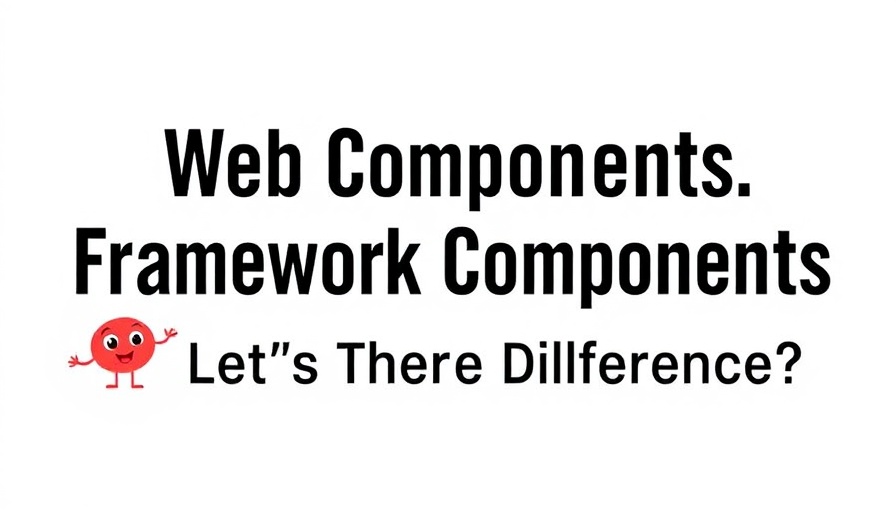
Understanding the Divide: Web Components vs. Framework Components
In the world of front-end development, the term "component" is frequently used, yet its meaning can differ dramatically depending on context. This comparison delves deep into the two primary types of components: Web Components and framework components, emphasizing their distinctive characteristics and use cases.
What Are Web Components?
Web Components are standardized web technologies that allow developers to create encapsulated, reusable HTML elements. They consist of three main specifications: Custom Elements, Shadow DOM, and HTML Templates. Together, these specifications enable the development of self-contained components that can operate independently of any particular JavaScript framework.
For instance, a developer can create a Custom Element using the Custom Elements API. This lets them define a new type of DOM element, ensuring encapsulation and reusability. The Shadow DOM further enhances this by allowing styles and behaviors to remain isolated from the rest of the document, preventing external interference.
The Reality of Framework Components
In contrast, framework components are tailored specifically for use within their respective frameworks, such as React, Angular, or Vue. While they provide significant advantages by integrating seamlessly with framework functionalities, they come with limitations. For example, framework components often necessitate a structured learning curve depending on the framework's conventions, making them less versatile across different environments.
The rigid ecosystem surrounding framework components can cultivate a scenario of vendor lock-in, where developers find it difficult to switch to another framework due to the reliance on specific components crafted for their current tools. Moreover, proprietary components can also introduce overhead, affecting performance during dynamic updates.
Juxtaposing Strengths and Weaknesses
The critical factor differentiating Web Components from framework components lies in reusability and interoperability. Web Components offer unparalleled ability to be implemented across various frameworks, aligning with the ethos of component reusability in web development. On the other hand, while framework components can capitalize on the advantages specific to their environments, they may lack the flexibility that some developers seek.
Performance Insights: Framework Agnosticism vs. Framework Dependence
Performance is another key aspect where Web Components often shine. Since they leverage native browser APIs, they can lead to optimized rendering and small load times, particularly in simple or smaller applications. However, older browsers require polyfills, which can complicate deployment.
Frame components, conversely, often benefit from optimizations such as virtual DOM rendering yet can add overhead from added frameworks and libraries. This means that while framework components can excel in high-traffic, dynamic applications, they might struggle in scenarios where lightweight performance is paramount.
Choosing the Right Tool for the Task
The decision between Web Components and framework components ultimately boils down to your project's specific requirements. Cross-framework reusability usually favors Web Components, while situations needing in-depth integration with specific framework features may benefit from framework components. Considering the trade-offs in encapsulation, performance, and overall development experience is crucial in making an informed decision.
In conclusion, the advent of Web Components presents a unique opportunity for developers to create scalable, reusable designs without drawbacks associated with specific frameworks. Developers need to weigh their priorities in terms of performance, reusability, and community support when deciding which component architecture best suits their needs.
 Add Row
Add Row  Add
Add 






Write A Comment